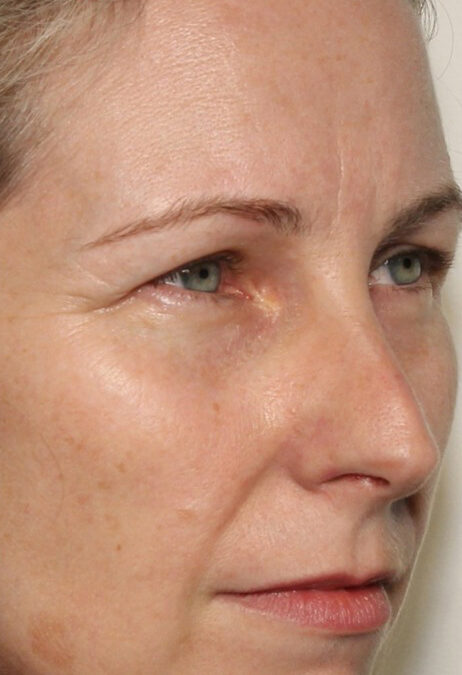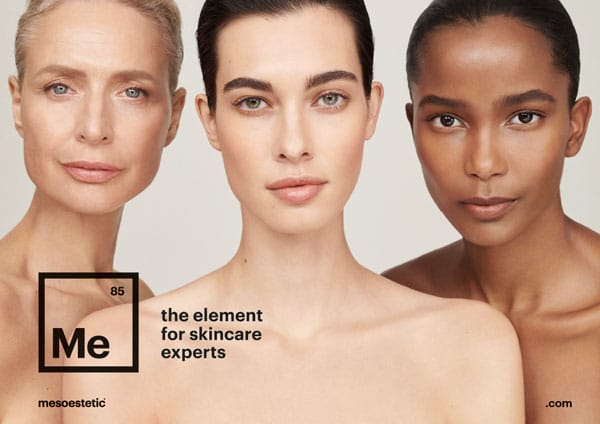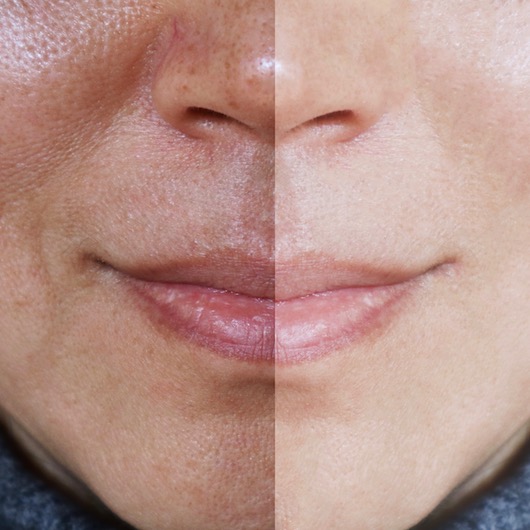
by wallacemcd | May 6, 2024 | Skin Peel
The Peel You are Having When You are Not Having a Peel
It is that time of the year again when our skin is letting us know the summer has been a little unkind. The telltale signs of hyperpigmentation are quite apparent on our skin. One of the most effective ways to deal with this discolouration, skin dryness and skin renewal is with the in-clinic treatment using a peel.
Peels are available in various strengths and cocktail formulations, and the one that is suitable for you will be dependent upon the skin condition being treated.
A peel is a skin rejuvenation technique involving the application of either enzymes, chemicals, herbs, or a cocktail of all of the above.
The idea behind a peel is to remove the damaged outer layers of dry, discoloured and coarse skin from the skin’s surface. When the peel is performed, the regenerative process of the skin is stimulated. The result revealed a marked improvement in skin conditions such as fine lines and wrinkles, texture and tone of the skin, lightening and brightening the skin, increased blood circulation, softening scar tissue, strengthening the integrity of the skin, stimulating fibroblast cells resulting in new cell formation, hydration, reduction of pore size, clearing of blemishes, more balanced oil production and an overall healthier appearance of the skin.
There are 4 main types of peel intensity when carried out in the clinical treatment room.
- 1. Progressive- this peel does not usually cause visible exfoliation. There may be superficial dryness for a few days post-procedure and then the skin will look refreshed and radiant and can be carried out as a standalone treatment or it can be used in conjunction with treatments such as microdermabrasion. This mild peel can be carried out every 1-2 weeks for 3-6 treatments.
- 2. Mid-depth – exfoliation with this peel usually occurs within 3- 5 days post-procedure. This level of peel will usually turn brown before a gentle flake occurs. This rejuvenation technique may be performed monthly.
- 3. Deep – the skin undergoes considerable peeling, almost like a snake shedding its skin. Two of the better-known deep peels are Cosmelan and the Deep Herbal Peel. The entire process can take 7-10 days and is usually repeated 3 times a year depending on what skin condition is being treated.
- 4. Biochemical Peel –The peel you are having when you are not having a peel. This is the new kid on the block from Spain. With this avant-garde technique, there is no downtime, no pain, no heat and no peeling.
The Biochemical peel incorporates active ingredients in its formulas with an effectiveness that has been proven by dermatological science. Using a cocktail of acid ingredients such as salicylic, lactic, malic, pyruvic, azelaic, mandelic, phytic, ferulic, hyaluronic, pure glycolic, citric, kojic and tranexamic, the outcome is nothing short of miraculous. These ingredients are not new in the peeling arena, the difference being the percentage, pH and layering technique.
Factors required to be reviewed prior to having a peel include
- 1. Home care and the skin preparation undertaken at least 2 weeks prior to treatment
- 2. Skin reactivity, thickness and oiliness
- 3. The time of the year and the intensity of the sun
- 4. Your general health including autoimmune disorders
- 5. The Fitzpatrick skin type – a guideline devised to determine how the skin might respond to a peel
- 6. The Glogau classification is also known as the wrinkle scale of photoaging. This will assist in determining the severity of sun damage in the form of discolouration and wrinkles.
Peels stimulate the formation of new healthier cells providing a revival to the complexion. No Matter your skin concern, the fact there are numerous peels and techniques you can be assured there is one that is just right for the result you want to achieve. Peel, and lift the veil your skin has been hiding under.
What is photoaging?
Photoaging refers to the premature aging of the skin caused by repeated exposure to ultraviolet (UV) radiation, primarily from the sun but also from artificial sources like tanning beds. Unlike natural aging, which is a biological process that occurs over time, photoaging is characterised by specific changes to the skin induced by external factors.
Key signs of photoaging include:
- Wrinkles and fine lines: UV rays can break down the collagen and elastin fibers in the skin, which are crucial for maintaining the skin’s firmness and elasticity. This breakdown leads to the development of wrinkles and sagging.
- Changes in pigmentation: Sun exposure can cause an increase in melanin production, leading to age spots, freckles, and uneven skin tone.
- Rough texture: Over time, sun exposure can cause the outer layer of the skin to become thicker and rougher, which might feel dry or leathery.
- Loss of elasticity: With the breakdown of elastin fibers, the skin loses its ability to snap back after stretching, leading to a looser appearance.
Preventive measures against photoaging include using broad-spectrum sunscreen, wearing protective clothing, and avoiding peak sun hours. Treatments to manage the effects of photoaging range from topical retinoids and antioxidants to more invasive procedures like laser therapy and chemical peels.

by Sue Carroll | Apr 19, 2022 | Uncategorized
Skin Peels – Revive & Renew Your Skin
We are moving into the cooler time of the year, which means skin rejuvenation and the reduction of hyperpigmentation should be at the forefront of your mind. Skin peeling is one such technique for skin renewal, offering many different intensity levels depending on the skin condition. A peel is a technique that involves the application of a variety of chemical or herbal solutions to remove the damaged outer layers of dead, discoloured and coarse skin cells from the skin’s surface.
You will notice a profound improvement by stimulating the cell renewal process and removing a build-up of dead skin cells, particularly in skin conditions such as wrinkles, fine lines, texture, tone, brightening, and lightening. In addition, a peel dramatically increases blood circulation, softens scar tissue and addresses concerns such as blemishes and pore size. It also stimulates fibroblasts to assist with new cell formation, and will ultimately result in healthier skin and a more even and balanced production of natural oils. Classifications of the skin should always be professionally considered before an experienced aesthetician undertakes a peel. The first is the Fitzpatrick skin type.
This guideline determines how one might respond to chemical peels and the risk of hyperpigmentation by noting the skin’s response to sun exposure. The second classification is the Glogau classification – also known as the wrinkle scale – of photoaging designed to aid the professional aesthetician in determining the severity of sun damage to the skin, primarily visible in the form of discolouration and wrinkles. There are four main types of peel intensity when carried out in a treatment room.
- Progressive – this peel does not usually cause immediate or visible exfoliation. However, the skin will look refreshed and glowing and can be carried out as a stand-alone treatment or in conjunction with other facial treatments i.e. microdermabrasion. The progressive peel can be carried out every 1-2 weeks for 3-6 treatments.
- Progressive Plus – exfoliation typically occurs within 2-3 days post-treatment. This level of peel provides good rejuvenation with more sunburn-type flaking and dryness.
- Mid-Depth – exfoliation occurs within 2-3 days post-procedure. The mid-depth peel provides full-face exfoliation and sometimes turns dark brown before flaking. Typically peeling occurs for 2-4 days. These peels can occur monthly.
- Deep – the skin undergoes considerable peeling. The entire process takes about 7-10 days for the peeling and can occur every 3-4 months.
Other factors that are taken into consideration by the experienced aesthetician are:
- Climate and time of the year when selecting a peel regimen
- Homecare and the use of corrective products to make the skin more receptive to acids, thus creating a less intensive treatment and more aggressive
- The number of times the skin has been peeled and the types of peels used
- The type of skin, whether thick, thin, oily, acne, sensitive or hyperpigmented. In general thin skins respond well to progressive treatment, while thick skins may need a mid-depth treatment to achieve exfoliation.
- The strength of the solution used and the pH. The higher the percentage and the lower the pH, the more intense the treatment.
- Treatment prepping method. An aggressive prep increases the depth of the peel.
- Length of time the solution is left on the skin.
- Amount of solution and the even distribution of the peeling solution left on the skin
- Method of application, amount, and the pressure used when applying the solution.
Peeling with acids or herbs is an art and a science. Many factors need to be taken into account by your aesthetician when deciding the correct peel to be applied. Peels stimulate new healthier cells providing renewal and revival to the complexion.

by Sue Carroll | Jul 17, 2017 | Uncategorized
The Solution to Minimising Enlarged Pores
Male or female, young or old, enlarged pores can play havoc with the smooth appearance we are all striving for with our skin. Beauty and healthy skin are associated with perfect skin and pores are a huge part of this equation. A person’s pores may be more or less noticeable depending on their genetics, skin type and age. The good news is there are
Clinical treatments and home care products can be used to minimise the appearance of the enlarged pore size.
There is a misconception surrounding the nature of a pore. It is not a hole in the skin, but rather an opening onto the skin’s surface from a gland below the skin. A pore provides a channel through the epidermis (first layer of skin) into the dermis (second layer of skin).
Three main causes of enlarged pores are:
Excessive oil or sebum – sebaceous glands produce a lot of oil and this can be stimulated by both heat and humidity particularly in the summer months
Decreased elasticity around the pore. This is when the skin becomes less supple over time, particularly when there has been a lot of sun exposure in the past – the collagen and elastin become less firm supporting the skin around the pore.
Increased hair follicle volume. The pore at the end of the hair follicle becomes clogged with oil, oxidizes and turns dark.
While we cant remove pores, the combination of Clinical treatments and home care products can certainly reduce the appearance of the pore size to make them less noticeable.
Some of the in Clinic treatments may include:
Venus Viva™, Nano Fractional treatment – the latest fractional radiofrequency device, has demonstrated great results in improvements to enlarged pores, wrinkles, reduced acne and traumatic scars.
Tixel – a skin treatment that involves the stamping of a heated metal plate with pyramid-shaped spikes onto the skin. It is not a laser, but instead, it utilises thermo-mechanical energy to evaporate tiny channels into the skin. This has the effect of stimulating new collagen formation which improves skin quality and assists with reducing pore size
Pixel Fractional Laser -is an FDA-approved fractional laser treatment that can reduce years of sun damage, fine lines and can also shrink the appearance of pores and smooth out acne scars.
Skin Needling – is one of the most effective dermal therapies for optimising skin regeneration. It’s a minimally invasive treatment designed to improve the appearance of pore size and skin texture
Chemical Peels – a skin-resurfacing procedure in which a chemical solution such as TCA or Jessner’s solution, is applied to the skin to remove top layers of the skin. The skin that grows back after a chemical peel is younger-looking and smoother. Chemical peels are used to treat enlarged pores, skin discoloration, wrinkles, skin and scars.
Referring to one of my usual analogies: if you were to go to your personal fitness trainer for a flat tummy, pay the fees, do the workout and come home and eat cream cakes and drink sugary beverages and then complain that their training did not work, you are not getting bang for your buck. You have to put in 80% of the work and us/they do 20% of the total result. This is the same with your skincare in Clinic treatments and your home care regime.
Your homecare regime should consist of a cleansing routine, the use of gauze and toning lotion, the application of either a Vitamin A, salicylic, mandelic, glycolic or lactic acid serum each night along with the appropriate growth factor and multivitamin serums, moisturising treatment cream for day and night and sunscreen for day use.
Pores are a vital part of our skin health, and getting rid of them completely is impossible. Regular work with the appropriate home care products and regular in Clinic treatments will assist with minimising their size, providing the skin with a smooth, firm appearance.
You may also like the posts linked below
The Lymphatic System and the Skin
Shining the light on Hyperpigmentation



